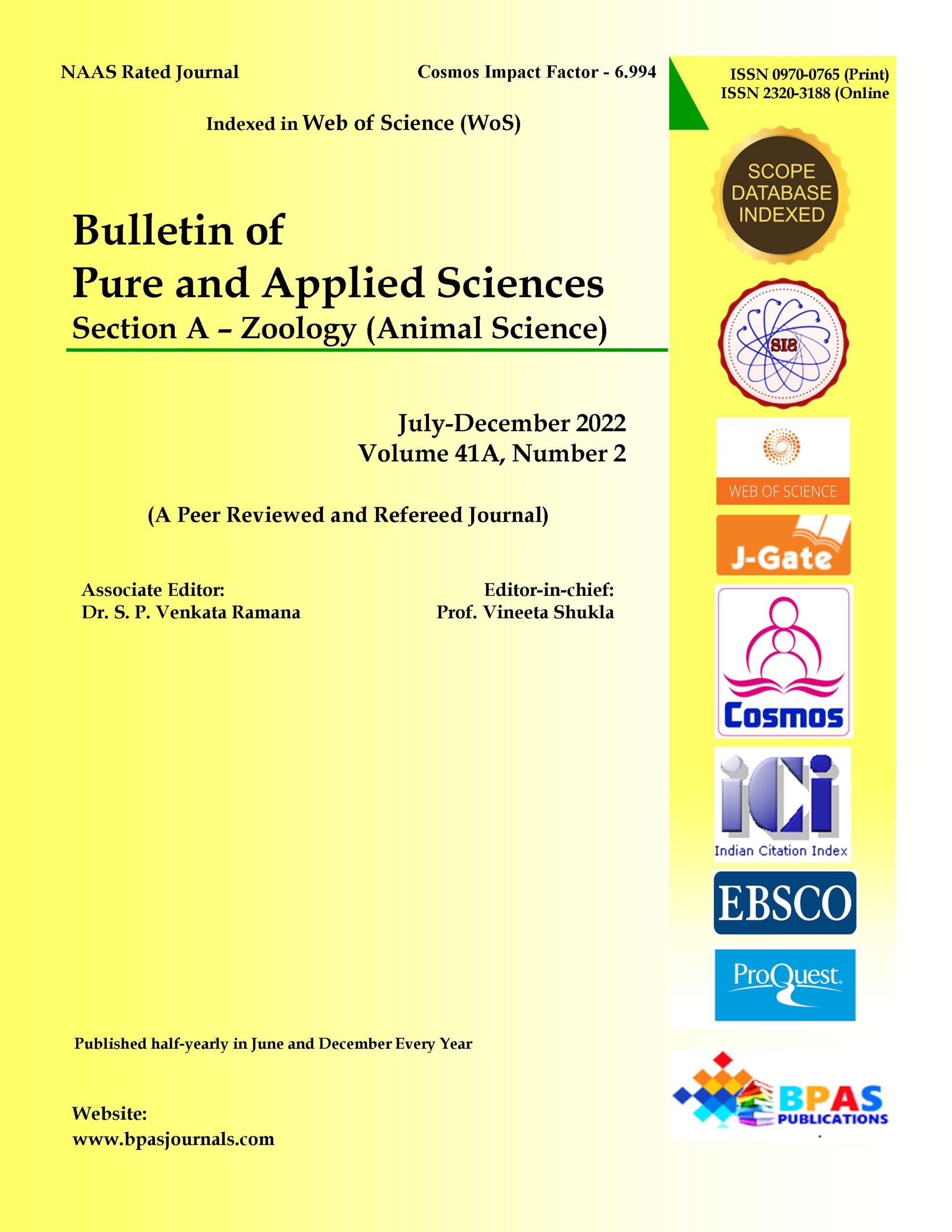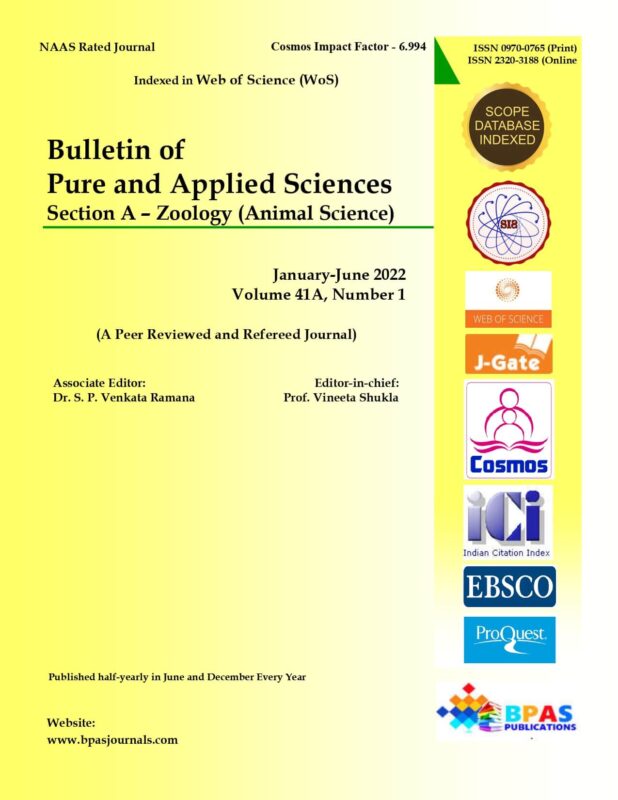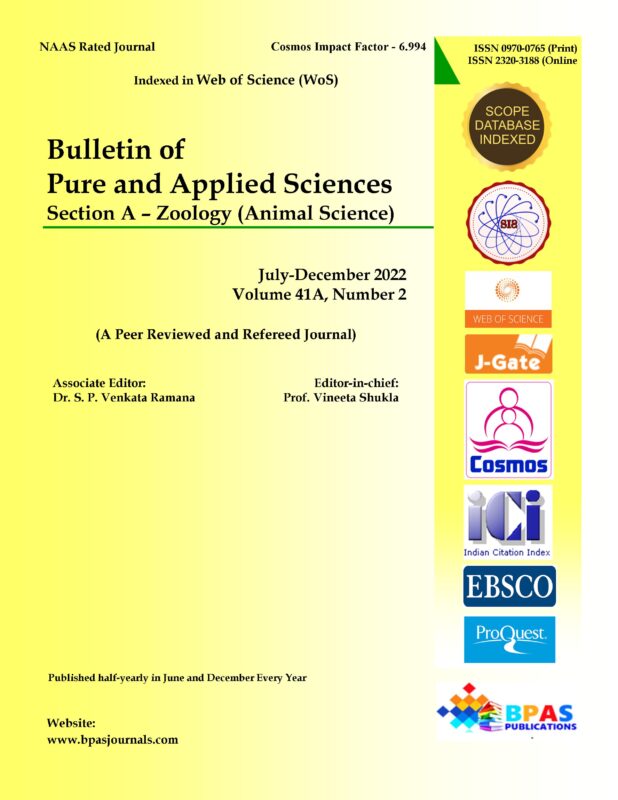Assessment of Genotoxicity, Hepatotoxicity and Reproductive Toxicity of Imidacloprid on Mammalian Models
9.38$
Bulletin of Pure and Applied Sciences
Zoology (Animal Science), Vol.41A, No.2,
July-December 2022: P.277-296
DOI: 10.5958/2320-3188.2022.00033.X
Article Info:
Review Article
Received on 28.05.2022
Revised on 15.07.2022
Accepted on 26.09.2022
Published on 15.12.2022
Description
Assessment of Genotoxicity, Hepatotoxicity and Reproductive Toxicity of Imidacloprid on Mammalian Models
1Poonam Yadav, 2Sunita Dalal, 3Sudhir Kumar Kataria*
Author’s Affiliation:
1,3Department of Zoology, Maharshi Dayanand University, Rohtak, Haryana 124 001, India.
2Department of Biotechnology, Kurukshetra University, Kurukshetra, Haryana 136119, India
*Corresponding author:
Sudhir Kumar Kataria
Department of Zoology, Maharshi Dayanand University, Rohtak, Haryana 124 001, India.
E-mail:
sudhir.zoology24@mdu.rohtak.ac.in,
How to cite this article: Yadav P., Dalal S., Kataria S.K. (2022). Assessment of Genotoxicity, Hepatotoxicity and Reproductive Toxicity of Imidacloprid on Mammalian Models. Bulletin of Pure and Applied Sciences-Zoology, 41A (2), 277-296.



